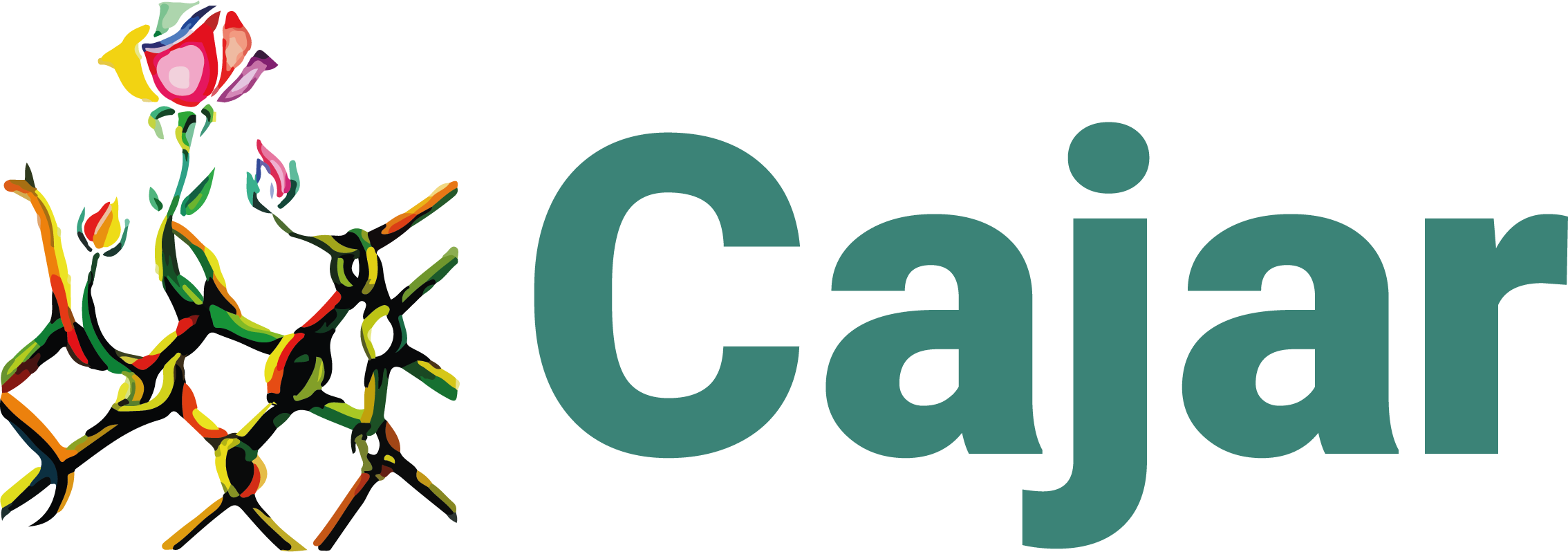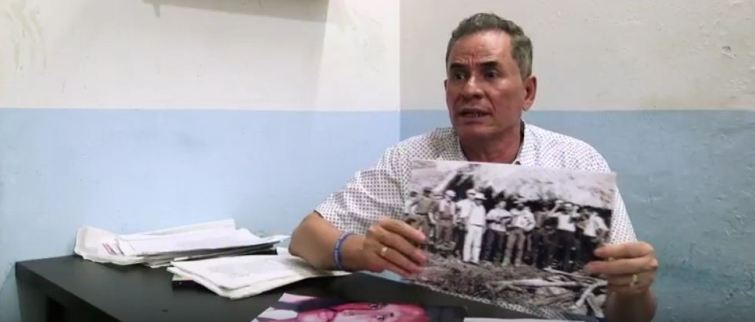See video David Ravelo, Serie “Words that kill”
Open Letter to President Juan Manuel Santos
Responding to a question in Parliament, British Foreign Office Minister Sir Alan Duncan recently stated that, “Our Embassy in Bogotá has closely followed the cases of individual [Colombian] political prisoners, such as David Ravelo and Húber Ballesteros.” The two prisoners are emblematic of 9500 political prisoners now in limbo as Colombia implements a peace accord. Imprisoned combatants and civilian political prisoners may soon be eligible for amnesty. Ravelo must be included.
He was arrested September 14, 2010 in Barrancabermeja, Colombia. Charged with plotting to murder municipal official David Núñez Cala in 1991, he is serving an 18 – year term. Appeals have failed. His case is now before the Inter-American Commission on Human Rights.
Ravelo’s case collapsed long ago due to lies and to judicial and investigatory flaws. The most exuberant writer of fiction would have trouble passing off as plausible the vengeance and bizarre procedural aberrations served up against Ravelo.
The city and David Ravelo
Ravelo’s native city on the Magdalena River grew up with its oil-processing center that now accounts for 60 percent of Colombia’s oil products. The city’s oil – workers have been Colombia’s most militant unionists. The Patriotic Union (UP) took root in the late 1980s as a leftist electoral coalition. A nationwide massacre soon spread and local members were dying. Leftist ferment in Barrancabermeja is well documented; see Leslie Gill’s 2013 article and her recent book “A Century of Violence in a Red City.”
As the 1990’s dawned, David Ravelo was serving as a UP member of Barrancabermeja’s city council and delegate to Santander’s Assembly. Charged with “rebellion” and ties to the FARC insurgency, Ravelo entered prison in 1993, remaining for 27 months. Paramilitaries arrived in the region and by the late 1990s controlled the city. They massacred 36 inhabitants of Barrancabermeja on May 16, 1998 and 17 more on February 28, 1999.
Ravelo says that 30 years of death threats and harassment represent “the costs someone who defends human rights must pay.” He was a labor organizer, community educator, journalist, and leader of local human rights groups. He joined the Colombian Communist Party’s Central Committee. The city’s Catholic Diocese honored Ravelo for defending human rights for 35 years. Responding to paramilitary violence, he founded and directed the CREDHOS human rights organization. Its leaders were soon being killed or threatened. Many left the area. Ravelo stayed.
Ravelo in 2007 circulated a video, viewable here, showing Colombian President Alvaro Uribe socializing with Barrancabermeja paramilitary leaders in 2001. Uribe’s ties to paramilitaries alarmed the U.S. government, Colombia’s military ally. Providing for paramilitary demobilization, Uribe’s Justice and Peace Law of 2005 eased such concerns. Then the video surfaced. Uribe, perturbed, may have sought retribution.
Persecution, lies, and vengeance
Officials in 1999 arrested and convicted paramilitary leaders Mario Jaimes Mejía (alias “Panedero’) and Fremio Sánchez Carreño for organizing the two Barrancabermeja massacres. Ravelo’s denunciations had played a role.
From Itagüí prison, paramilitary leader Roberto Pérez Álzate “gave the order,” says Ravelo, “to Mario Jaimes Mejía to take revenge and accuse David Ravelo Crespo and José Arístides Andrade” of murdering David Núñez Cala in 1991.
Already serving a 20 year sentence, Jaimes confessed to organizing the massacres of 1998 and 1999 in order to qualify for the Justice and Peace Law. According to that law, Paramilitary leaders who told the truth and demobilized troops would go to jail for eight years. Jaimes sought to ingratiate himself further and in 2008 confessed to the Núñez Cala murder and named Ravelo and ex- congressperson Arístides Andrade as accomplices. He falsely claimed they attended a meeting in Barrancabermeja where the murder was planned.
His paramilitary associate Fremio Sánchez also confessed to the massacres and to his own role in the Núñez Cala murder. At Jaimes’ urging, he also implicated Ravelo and Arístides Andrade. He too wanted to qualify for the Justice and Peace program so that his own sentence might be shortened; he failed.
Jaimes Mejía was a FARC member when he killed Núñez Cala, joining the paramilitaries later on. In 2008, he showed investigators a 1985 photo of Ravelo and Arístides Andrade attending a peace meeting with FARC leaders at a forest encampment. Authorities had used the same photo to put Ravelo in prison in 1993. But the figure identified as Ravelo turned out to be a journalist; the truth led to his release in 1995.
Ever so strange
Ravelo’s case rests on multiple assaults on the truth. To begin: a local prosecutor dismissed allegations against Ravelo in 2008. Later the national Attorney General transferred his case to an “anti-terrorism prosecutor” in Bogota.
That prosecutor, William Pacheco Granados, was a criminal. As a police lieutenant in 1991 Pacheco arranged for the “forced disappearance” of a young man. A military court convicted him; he spent a year in prison. Law 270 of 1996 prohibits anyone “fired from any public office” or “responsible for committing any punishable act” from joining “the judicial branch.” Pacheco Granados, who resigned as a prosecutor in 2013, faces civil prosecution for murder.
Second assault: Colombia’s Attorney General on August 20, 2014 accused Jaimes of lying when he accused Ravelo and Andrade of complicity in the murder. A judicial unit specializing in false witnesses is investigating. But nothing is happening. Between May 26, 2015 and October 27, 2016, six scheduled court sessions were canceled, the last time because Jaimes’ “didn’t want to leave” prison to attend.
Three, accusers have assaulted the truth in other ways. Jaimes Mejía arranged for journalist Yineth Bedoya to be kidnapped before she was to interview him in prison in 2000. She was beaten and raped. Jaimes received a 28 – year sentence and was removed from protection under the Law of Peace and Justice.
Investigators connected the discovery of body parts in the sewers of La Modelo prison to Jaimes’ order to “disappear” fellow prisoners. He’s accused of ordering the killing in 2003 of a school head in Barrancabermeja. Authorities charge Jaimes and Sánchez with committing aggravated assault from prison against a Barrancabermeja businessman.
Four, Jaimes Mejía bribed fellow prisoners to testify that Ravelo and Arístides Andrade attended the meeting to plan the murder. (The latter has fled.) Witnesses at trial sessions in 2011 and 2012 testified that Jaimes used paramilitary prisoner Fremio Sánchez to recruit them. Ravelo, looking at contradictory testimony, thinks witnesses “didn’t know who he was.” Officials facilitated meetings between Jaimes and Sánchez at which they conspired against Ravelo. A jailed lawyer, advising prisoners, testified to their collaboration. See Appendix A for details.
Five, none of Ravelo’s 30 defense witnesses were allowed to testify during the trial proceedings. Prosecutor Pacheco closed his pre-trial investigation without evidence of Ravelo’s innocence being considered.
Six, four weeks elapsed between Ravelo being convicted and the announcement of his conviction on December 11, 2012. The delay impeded preparations for Ravelo’s appeal and was a “flagrant violation of due process.”
Lastly, the atmosphere surrounding Ravelo’s trial was hardly conducive to establishing the truth; “family members and members of Ravelo’s CREDHOS organization continually suffered paramilitary death threats and harassment while the trial was in progress.”
Ravalo summarizes: “[T]he paramilitaries had ‘reasons’ for wanting to eliminate me. That’s why … they tried to assassinate me physically, but didn’t succeed. They decided to eliminate me judicially, and for that they implemented ‘the judicial façade,’ using the lie as their favorite weapon. It’s clear, therefore, that the truth is the first victim of war.”
Appendix A: Recruitment of false witnesses
Fremio Sánchez, excluded from the Justice and Peace program, lived in La Picota prison’s main section. Mario Jaimes was confined to another section of the prison set aside for paramilitaries serving shorter sentences under Justice and Peace. Investigator Jairo Salazar Medina (previously fired from the Army for mismanagement of funds) arranged for the two to meet in Jaimes’ section in late 2009 in order to conspire against Ravelo. They testified to such meetings during Ravelo’s trial. Later in Bucaramanga, where trial sessions were taking place, they were lodged together in the Justice and Peace section of that city’s Modelo prison, against the rules.
Ravelo’s judges disregarded testimony from lawyer Pedro Gilberto Niño who, serving his own sentence in La Picota, stated that Fremio Sánchez told him he was working for “a person” – in fact, Jaimes – who was helping Sánchez qualify for Justice and Peace. As payback, Niño said, Sánchez would testify against Ravelo and find others to do likewise.
Paramilitary Orlando Noguera, who participated in the killing of Núñez Cala, testified that Jaimes and Fremio Sánchez “tried to bribe him to accept responsibility for the murder of Núñez Cala and to incriminate Ravelo in exchange for benefits under the Justice and Peace Law.”
Fernando Barbudo Chavez testified that fellow prisoner Fremio Sánchez arranged for him to testify that he attended the meeting and saw Ravelo there. However, Barbudo Chavez arrived in Barrancabermeja in 1993 when he was only 13 years old – two years after Núñez Cala’s murder.
Prisoner Wilder Joaquín Parejo García testified May 16, 2011 that for pay he inscribed Mario Jaimes’ telephone – dictated account of the meeting in a notebook that he handed to Fremio Sánchez. The latter was thereby enabled to accurately communicate Jaimes’ version of the affair. Ravelo observed Sánchez in court reading a script contained in “small, ringed notebook blue in color.”
Ravelo suggests that the testimonies demonstrated either that witnesses didn’t know him or weren’t at the meeting. Accounts varied as to his physical appearance, the time of day of the meeting, modes of arrival at the meeting, and whether or not they’d been at other meetings with Ravelo. They differed in reporting political groups Ravelo belonged to.
1. Avi Chomsky, Salem, Massachusetts, USA
2. Bruce Gagnon, Bath, Maine, USA
3. Dan Kovalik, Pittsburg, Pennsylvania, USA
4. David Bacon, USA
5. James D. Cockcroft, Montreal, Quebec, Canada
6. Jeffrey St. Clair, Petrolia, California, USA
7. Kathy Kelly, Chicago, Illinois, USA
8. Medea Benjamin, Washington DC, USA
9. Noam Chomsky, Cambridge, Massachusetts, USA
10. Ray Luc Levasseur, Waldo, Maine, USA
11. Frank McGreal, Vancouver, British Colombia, Canada
12. Adrian C.Y. Fu, Vancouver, British Columbia, Canada
13. Alan Bede, Arlington, Massachusetts, USA
14. Bill Hackwell, Oakland, California, USA
257 more…
Organizations
1. African Awareness Association, Richmond, Virginia, USA
2. All-African People’s Revolutionary Party (GC)
3. Alliance for Global Justice
4. Arizona Peace Council
5. Brooklyn Greens
6. Campaign to Stop Killer Coke, New York, New York, USA
7. Center for Marxist Education, Cambridge, Massachusetts, USA
8. Chicago ALBA Solidarity
9. Code Pink
10. Colombia Support Network
11. Committee for International Labor Defense (Boston)
12. Communist Party of Australia
13. Communist Party of Canada
14. Communist Party USA
15. Freedom Road Socialist Organization
16. Global Network against Weapons in Space
17. Greater New Haven Peace Council, Connecticut, USA
18. Houston Communist Party, Texas, USA
19. Houston Peace Council, Texas, USA
20. International Committee for Peace, Justice and Dignity, Oakland, CA
21. International Network in Solidarity with Colombia’s Political Prisoners
22. Ken Appelhans Club, CPUSA; Indianapolis; Indiana; USA
23. Let Cuba Live Committee of Maine
24. Maine Green Party Peace Network
25. Maine Green Women’s Caucus
26. Maine Independent Green Party
27. Maine Veterans For Peace, Tom Sturtevant chapter 001
28. Midcoast Peace and Justice Group, Warren, Maine
29. MLToday.com
30. Movement for People’s Democracy
31. National Lawyers Guild, Massachusetts Chapter
32. National Network on Cuba
33. Peninsula Peace & Justice, Blue Hill, Maine, USA
34. The International Committee of the National Lawyers Guild
35. The Party for Socialism and Liberation
36. U. S. Peace Council
37. Voices for Creative Nonviolence
38. Workers World Party

